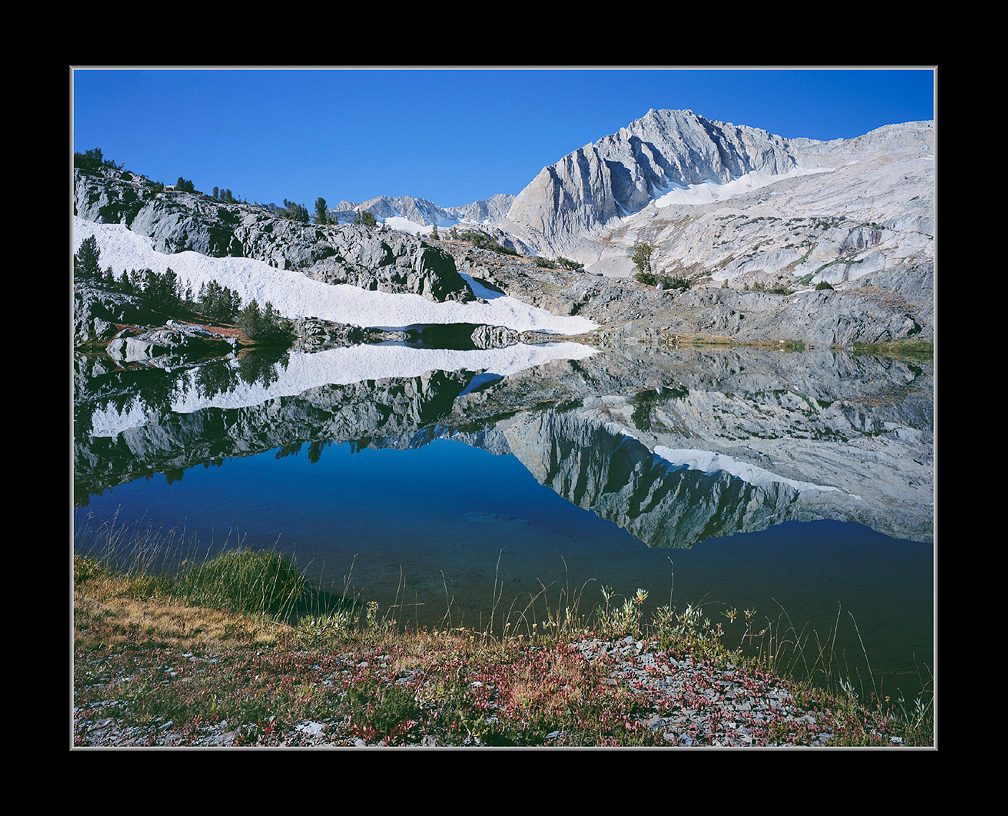A difficult issue with presenting large images on the public Internet is if an image can be displayed on a monitor it can also be copied and stolen. And one reason that happens is the Internet is so vast users that illegally grab copyrighted material of any media can easily hide in its vast sea and doing anything about it is only within the realm of large organizations with legal resources. If a large image is downsized to monitor size, much of what gives it value is often lost with results often looking boring. Accordingly a decade ago I provided 33% pixel downsized crops for images on my homepage gallery that served some purpose of at least showing what small sections of a large image look like. For instance with this image:


Recently worked on this some more because with wide panoramas the monitor sized images become even more pathetic. The below 3 image files show full downsized images at top with some text information then below three 300 pixel wide vertical slices downsized at 50% pixels. I've managed to process a couple dozen of these large stitched images from that week though not all are fit for public viewing haha.
As an example, the below Box Lake image is 12,000 by 10,600 pixels that if printed at 300 pixels per inch will produce a sharp print of 40 by 35.3 inches. I've standardized these presentations to 1000 pixel image widths since most all pc desktop monitors currently at least display at XGA graphic resolutions over that. And web browsers have followed by increasing the sizes of images they can handle. Beyond 1000 pixels in width is still asking for trouble while maximum vertical image sizes are just a matter of using vertical scroll bars. Because the image is displayed in pseudo mat borders,actual image widths are 952 pixels. Below the text are three long 300 pixel wide vertical slices downsized at 50% pixels. So in this example the 10,600 pixel full vertical image is reduced to 5,300 pixels as a source for the slices. Average pc monitors have a dot pitch of about 100 RGB pixels per inch so that is a 5300/100= 53 inches of monitor display. With a HD sized display, about 4 display screens. A professional print that displays more densely at 300 ppi, will of course look even sharper. The green arrows below the image at top, point to locations of the slices.

Notice how the slices show all the trout surface feeding that are lost in the severely downsized image at top. And how much more there is to all the foreground wildflowers at the lake edge and up the near slope?
Of course stitching together images can be performed manually on a tripod with a panoramic head instead of using a robotic head and that is in fact how I proved the function to myself. Easily done when just stitching a few images in a single row or single column. But with multi columns and rows it is increasingly complicated. If a single frame within a set of stitching images has an issue, for instance not having all elements in focus or not covering the proper area, then the whole set becomes unusable. Thus a robotic head at least reduces that part of the difficulty. Most significant subject limitations are images with moving elements like clouds and water and elements within each frame that are at different focus distances. A single out of sharp focus element in a single frame can cause a whole set of images to be unusable. For landscape work that is the key difficulty. Subjects all in the background are easy because one can use infinity focus with open apertures where lenses are sharpest. With typical landscapes having foregrounds, middle grounds, and backgrounds, focus on each frame needs to be manually changed and multiple captures may be necessary that can later be focus stack blended. Intimate subjects can also work like this shot of columbine against a rock wall:

This is an example of a large stitch of some famous peaks that could be printed sharp at an 80 inch width. Below are links to three horizontal sections I cropped just for the ridge skyline that provides some idea of the enormous amount of detail. Had to break the pic up into 3 sections so my Yahoo business site would not choke loading. Note at 80 inches @300 ppi that is about 3*80= 240 display inches for a usual desktop monitor. So in three sections each of the images are about 80 inches of monitor horizontal scrolling.

left section 3.4mb
http://www.davidsenesac.com/Gallery_C/MT03919-03944-ridgeL.jpg
center section 4.1mb
http://www.davidsenesac.com/Gallery_C/MT03919-03944-ridgeC.jpg
right section 2.8mb
http://www.davidsenesac.com/Gallery_C/MT03919-03944-ridgeR.jpg
http://www.davidsenesac.com
http://www.davidsenesac.com
Edited 2 time(s). Last edit at 08/03/2014 01:57PM by DavidSenesac.

